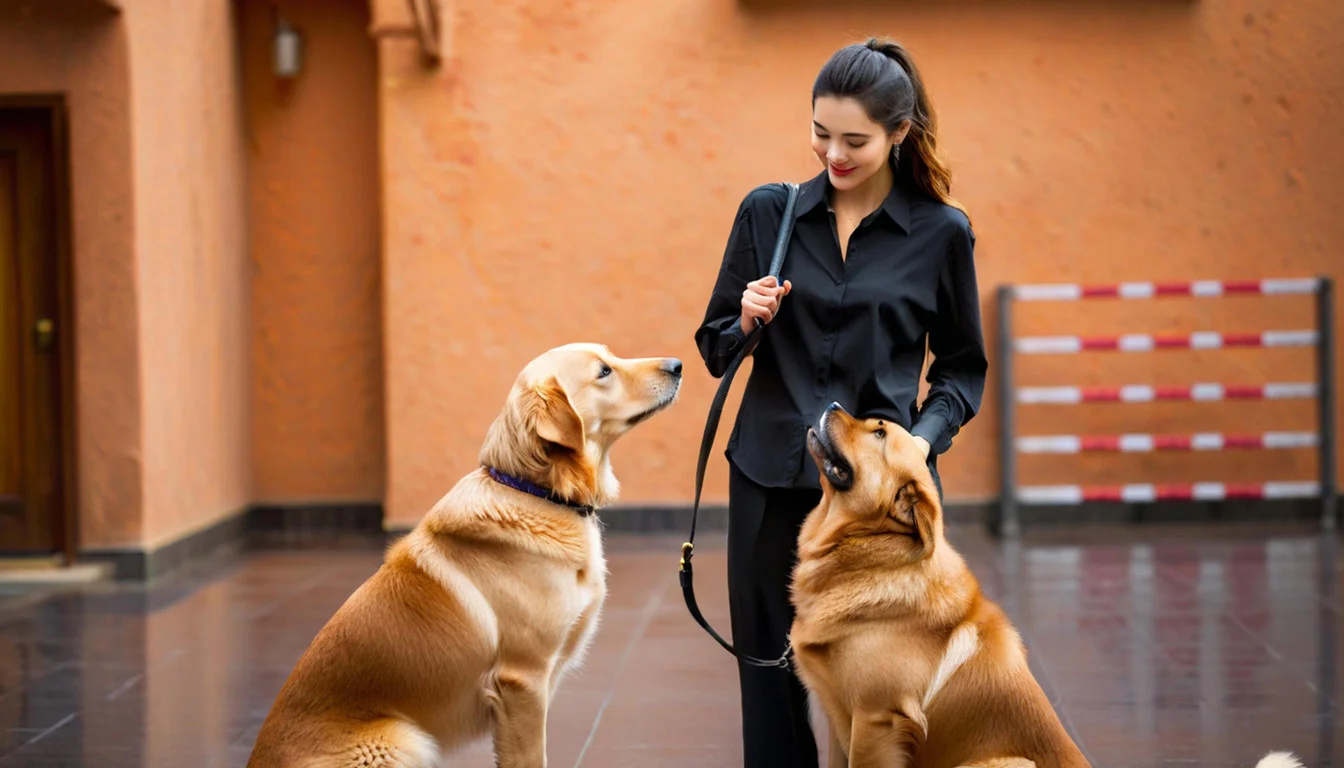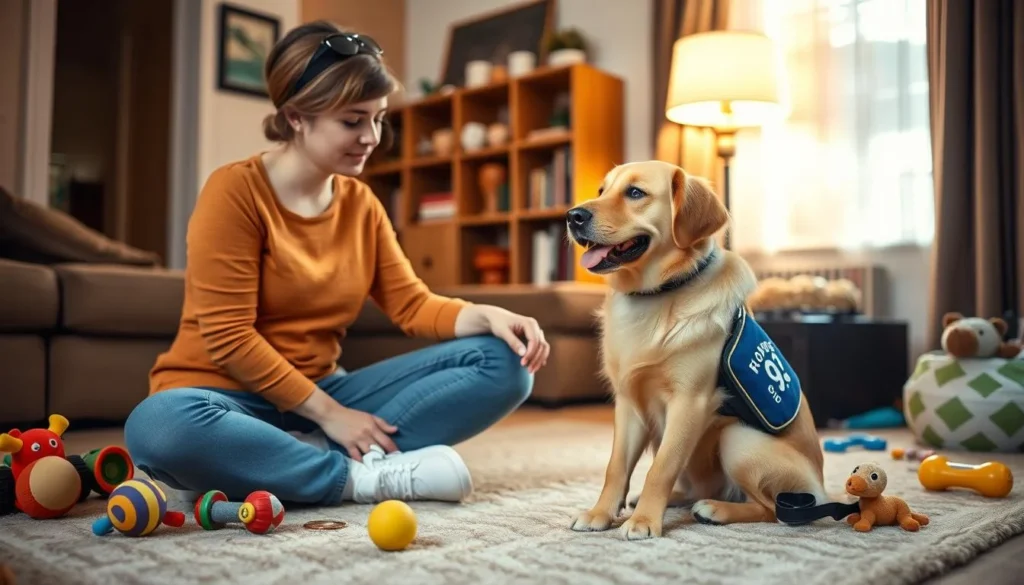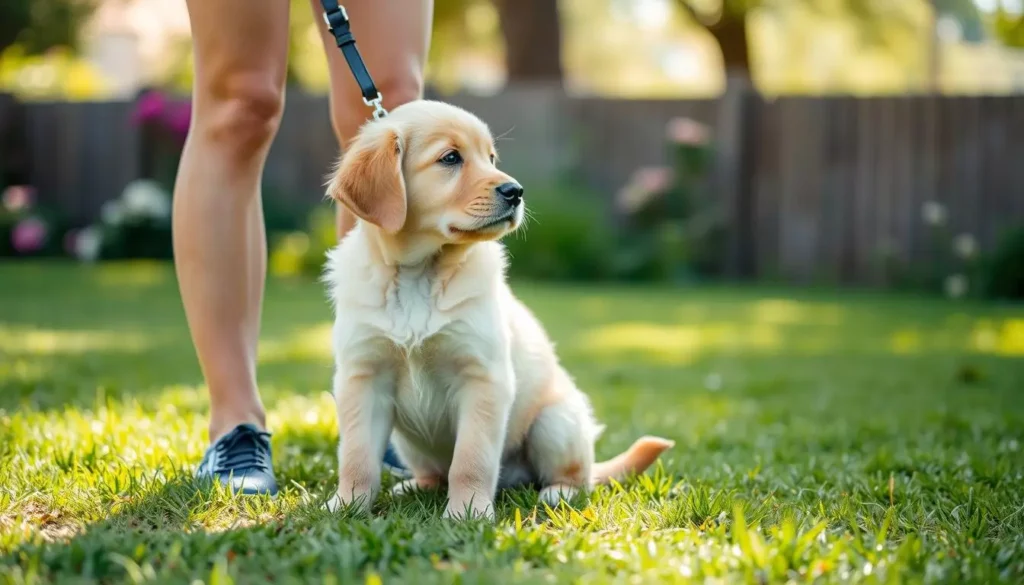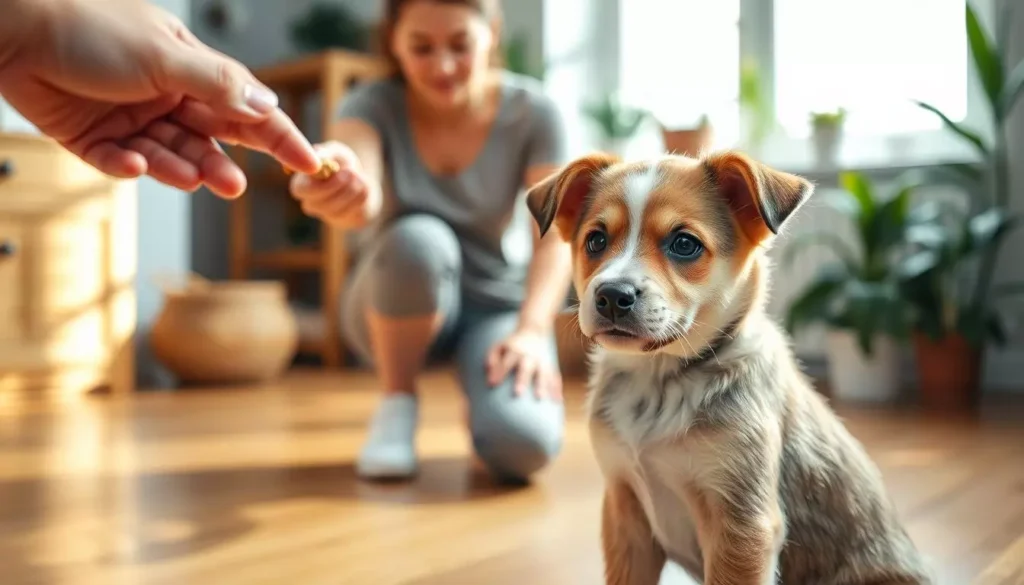I remember the first time I met a dog needing more than basic commands. I felt a mix of hope and worry. Hope that training could help, worry about making the wrong move. This moment taught me that training dogs is about understanding their feelings as much as teaching them skills.
At the Humane Society of Washington County, I saw a Jack Russell mix named Squid change. He went from being reactive and overwhelmed to calm and adoptable. His transformation came from consistent routines, targeted exercises, and patient handling. This shows that with the right plan, dogs can change.
I want to share practical tips for your pup. In this series, I'll explain why behavioural dog training is important. I'll show how it differs from basic obedience and give simple steps to help your dog feel safer and more confident.
Key Takeaways
- Behavioural dog training focuses on underlying emotions, not just commands.
- Behavior modification works best with structure, consistency, and clear routines.
- Real-life cases like Squid show that focused plans can lead to successful rehoming.
- Behavioral training for dogs reduces stress for both pets and owners.
- Small, regular efforts and the right support make lasting dog behavior transformation possible.
Understanding behavioural dog training and why it matters
When I talk about behavioural dog training, I mean it's about understanding why dogs act certain ways. It's not just about teaching tricks. It helps owners manage issues like impulse control and high energy.
Behavioural training starts with a detailed plan based on a dog's needs. I look at what triggers their actions and their environment. Then, I create exercises to teach new habits and prevent unwanted ones.
This training is different from basic obedience. It focuses on how a dog behaves, not just what they do. It teaches them to be calm and safe, even when stressed. The Gold Paw model and other programs help dogs respond better before relying on just obedience.
Training your dog this way has many benefits. It reduces stress at home and makes routines clearer. It also makes your home safer. You'll see improvements like better manners and more patience with your dog.
I make sure owners can learn from anywhere. This way, they can keep up with training without missing out. It's all about making training fit your dog's unique needs.
My aim is to build confidence in both dogs and their owners. When owners understand their dog's behavior, they can use patient and consistent methods. This leads to lasting changes and shows the real value of behavioral training.
Common behavior problems I see and how to recognize them
I help owners understand their dogs' behavior. I explain what I see, show signs to watch for, and offer home training tips. Spotting problems early is key.
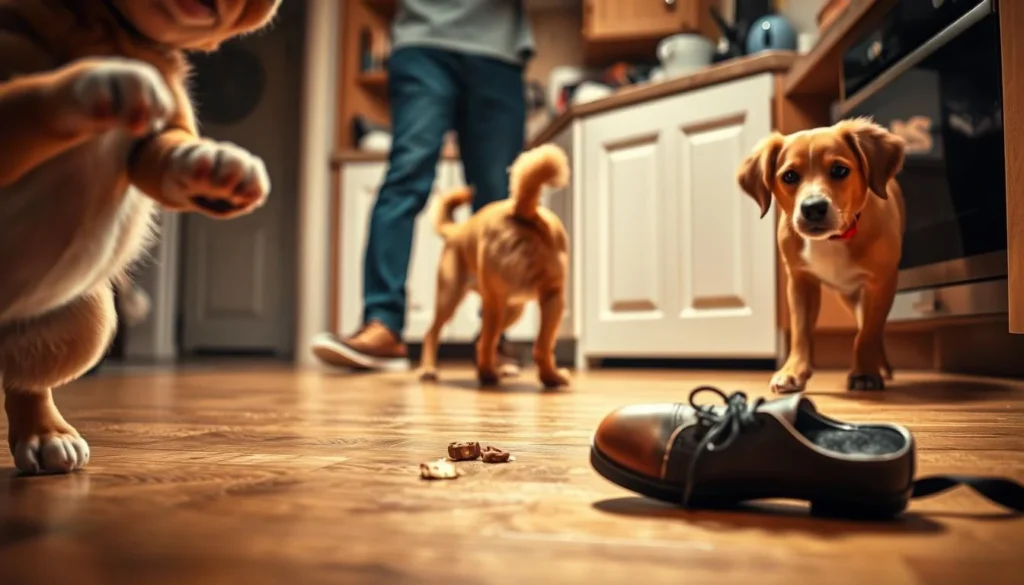
Puppy biting and mouthing are common issues. A young Labrador was a good example. It bit hard on hands and clothes.
Signs include quick mouthy grabs and no bite control. The dog gets excited when people laugh or push away.
Using a clear “ouch” and giving a chew toy helps. Owners can teach gentler mouthing with closed-fist treats. These steps are easy to follow at home.
Reactivity and aggression can be hard to tell apart. I look at body language and how the dog reacts. Reactivity is high energy and quick to calm down.
Aggression is stiff and growling, with a clear intent to bite. A dog might bark and lunge at people, but it's not always aggressive.
Desensitization and counter-conditioning can help. This approach reduces reactivity without danger.
Separation anxiety shows when owners leave or when dogs are alone. Signs include pacing and destructive chewing. High energy at departure is a warning sign.
Addressing separation anxiety takes time. I use gradual departures and enrichment to reduce stress. Punishment only makes things worse.
Teaching independence is key. Small, predictable successes help most dogs.
Remote consultations are effective with the right content. I share videos, checklists, and PDFs. Owners can learn and apply techniques at home.
Adolescent dogs may regress around 5–18 months. This can lead to jumping and leash pulling. Seeing these as normal growth helps avoid labeling them as permanent problems.
Creating a structured environment for successful behaviour training
I set up the space so owners can follow clear steps. A structured environment for training cuts confusion. It gives dogs predictable cues and reduces accidental learning of unwanted behaviors.
Why routine and steady responses matter
Consistency in dog training makes instructions meaningful. When every person uses the same cues and rewards, dogs learn faster. I recommend written protocols and checklists you can keep offline for daily use.
Predictable routines help during adolescence. Dogs under steady schedules show fewer regressions and less anxiety. Workshops and step-by-step programs support owners who struggle to keep that steady approach.
House rules, predictable routines, and everyone on the same page
House rules must be explicit. I ask families to agree on entry rituals, furniture access, and play limits. That unified handling reduces mixed messages and speeds progress.
Exercise is part of the plan. Two to three hikes or structured play sessions a day drain excess energy. When a dog is physically tired, behavioural dog training at home is more effective and less stressful.
Using management tools to prevent accidental reinforcement
Management tools for dogs stop unwanted practice of bad habits. Crates, baby gates, secure leashes, and chews give safe options until training transfers control to the dog.
I teach owners how to use limited touching during restraint desensitization, and how to remove attention for nips. Clear removal of attention is a simple management step that prevents reinforcement of the wrong behavior.
| Focus | Practical item | Why it helps |
|---|---|---|
| Daily routine | Written checklist with times | Promotes consistency in dog training and lowers confusion |
| Exercise | Two to three structured play or hike sessions | Reduces excess energy that fuels problem behaviour |
| Handling rules | Unified cue list for all family members | Prevents mixed messages and speeds learning |
| Safe separation | Crate or stall and separation from incompatible pets | Prevents traumatic interactions and uncontrolled reinforcement |
| Short-term control | Baby gates, leashes, chews | Management tools for dogs keep situations safe while training continues |
Positive reinforcement strategies that actually work
I use simple reward systems to teach dogs new habits. My method combines behavioural dog training with easy steps for owners at home. I focus on short sessions, consistent timing, and treats or toys that match the dog's interest.
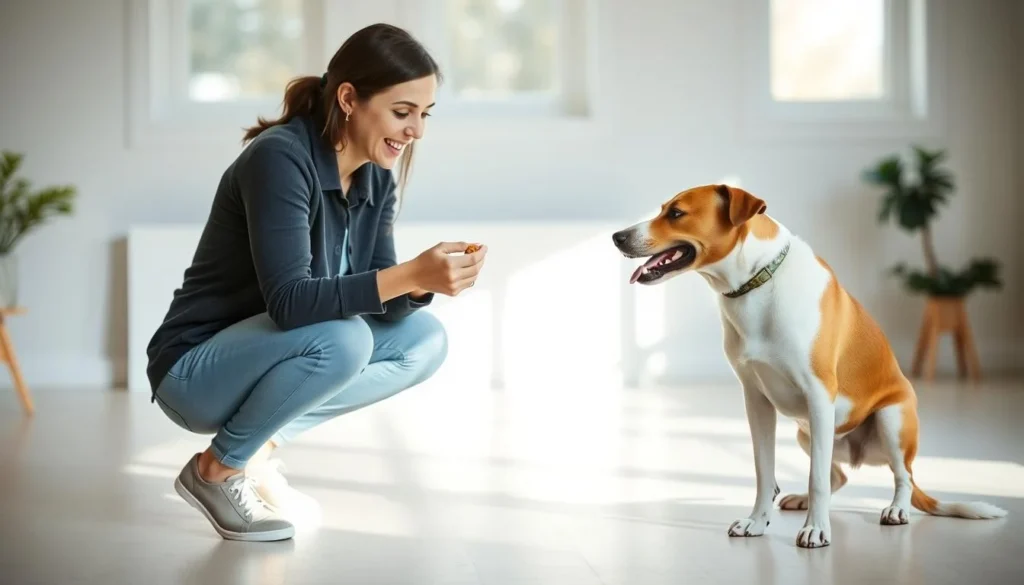
I start by marking the exact moment a dog offers the wanted behavior. A clicker or a clear verbal marker lets the dog know which action earned the reward. This precision speeds up learning and makes training easy for both owners and dogs.
I adjust treat value based on the situation. High-value food is used during distractions or when the dog is young. Low-value kibble is better for quick repetition. This mix supports long-term progress and keeps sessions fun.
I shape behaviors in small steps. For sit-to-gain-access, I reward brief sits and then increase the time before opening doors. For trade-and-leave-it, I teach a reliable exchange: giving up an item leads to a better reward. These examples show how reward-based training works.
I teach soft-mouthed taking by holding treats in a closed fist and releasing only as the dog's bite softens. For very hard bites, I use a calm "ouch" and briefly withdraw my hand, then resume shaping with rewards. This approach shapes gentler behavior without fear.
I also turn daily routines into training drills. Waiting politely for food or for a door to open becomes a series of short, high-success trials. This builds impulse control and embeds training in real life.
Below is a quick comparison of strategies I use and when I use them. It helps owners pick the right method for each stage of learning.
| Goal | Technique | When to Use | Typical Reinforcement |
|---|---|---|---|
| Polite entry (sit-to-gain-access) | Shape sit, delay access, reward longer sits | Doorways, gates, visitor arrival | High-value treat then praise |
| Resource control (trade-and-leave-it) | Exchange low-value for high-value, practice release | Chewing items, food guarding | High-value treat or toy swap |
| Gentle take | Closed-fist shaping, calm feedback on hard bites | Puppy mouthing, treat delivery | Soft reward progression |
| Maintain skills during adolescent phases | Short frequent sessions, variable rewards | High-distraction environments, teenage regression | Variable schedule, high-value at first |
Behavioral training for dogs at home: step-by-step protocols
I provide clear, easy-to-follow protocols you can print. Each one breaks tasks into small steps. This makes it easy for owners to train their dogs at home, in the yard, or on walks.
I start with very short sessions and gradually increase them. This method fits training into your daily routine. It keeps dogs focused and prevents them from getting tired.
Short, frequent training sessions for real progress
I begin with training sessions lasting three to five minutes. It's more important to repeat the training than to make it long. Quick actions like sitting before opening a door or recalling in the yard are effective.
Consistent cues and rewards are key. A food-squeeze tube helps with dogs that mouth too much. Training in different places and situations makes the dog reliable. Short sessions help avoid frustration and boost success.
Touch and restraint desensitization exercises for sensitive dogs
I use a gentle touch desensitization protocol for sensitive dogs. It starts with small, pleasant touches and pauses before handling. Treats are used to show that hands mean good things.
If a dog shows stress, I slow down and reward calm behavior. Handlers avoid touching the dog outside of training sessions. A soft toy helps redirect mouthing during touch exercises. Gradually increasing touch and pressure helps the dog feel in control.
Turning walks, play, and chores into training opportunities
I turn daily activities into training moments. Walks become chances to practice walking on a leash, recalls, and staying focused. I ask for a sit before crossing streets or greeting people.
Chores like opening doors or putting away groceries are also training opportunities. Playtime is used to practice impulse control by pausing play until the dog is calm.
I offer a daily plan you can print. It outlines goals, step-by-step progressions, and tips for troubleshooting. Follow the steps, keep sessions short, and use daily activities as training moments. This makes training dogs at home practical and effective.
Behavioral training for dogs with anxiety
I help owners identify what makes their dogs anxious. We create routines and set limits to reduce stress. A detailed plan guides you in making your dog less reactive and more confident.
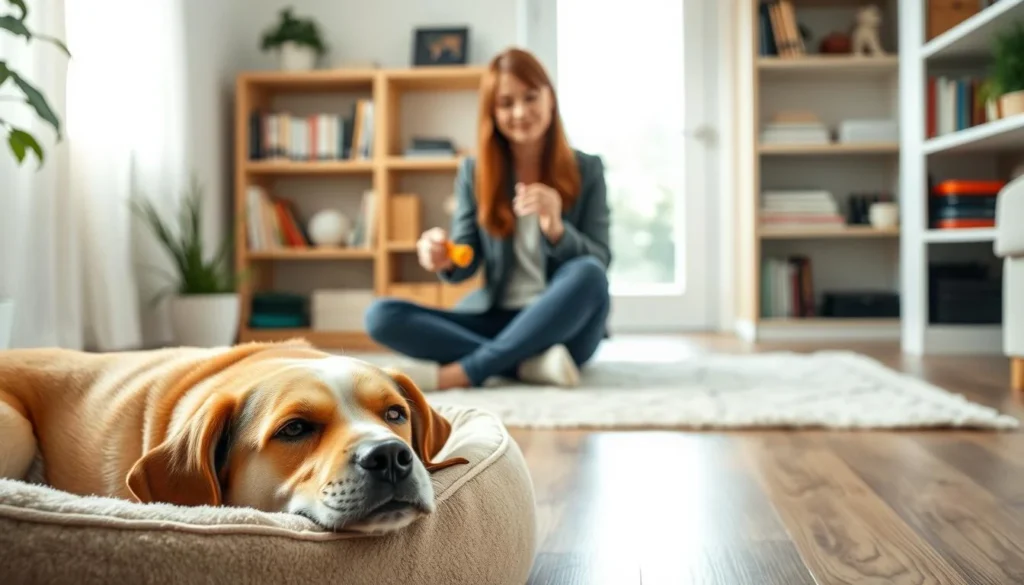
Identifying triggers and creating a desensitization plan
We start by listing what makes your dog scared or excited. This includes other dogs, loud noises, or being handled. We track how close, loud, and how your dog reacts.
This info helps us make a plan to slowly get your dog used to these things. We keep them calm while they get more comfortable.
Counter-conditioning: turning stress into positive associations
We use rewards to change how your dog feels about things. For example, when Squid sees another dog, we give treats. This makes the sight of other dogs a good thing.
This way, instead of being scared, your dog looks forward to seeing other dogs.
When to use calming management (crate, safe space, enrichment)
Calming management helps stop anxious behaviors. Crates or safe spaces can be a place of comfort for your dog. We also use supervised socialization and classes.
Adding enrichment, like food puzzles, helps lower anxiety. We limit time alone and use gentle exercises for sensitive dogs.
For teenagers with anxiety, we create plans that slowly introduce triggers. We pair these with positive experiences and routines to help them feel better.
Behavioral training for dogs with separation anxiety
I help owners create clear plans for dogs with separation anxiety. These plans start with small steps. I teach simple actions that owners can follow, even when they're busy.
Our training starts with short departures that get longer over time. Small victories build confidence. We aim for calm returns to keep progress steady.
Structured alone-time exercises teach dogs to be independent. Short sessions in a safe space help them learn to cope. We use long-lasting chews or puzzle feeders to keep them occupied while owners are away.
Owners get a script for departures. It includes cues, timing, and what to do if the dog gets upset. I help adjust the pace to match the dog's comfort level.
Predictable routines reduce stress. I recommend consistent wake, walk, and feeding times. This helps the dog accept absences as part of a stable day.
We track progress with short logs. Notes on behavior during alone-time exercises guide us. This keeps training focused and responsive to the dog's needs.
Below is a compact plan I use with clients. It outlines session length, owner actions, enrichment choices, and signs to watch. Each row provides a clear next step for the dog and owner.
| Phase | Session Length | Owner Action | Enrichment | Progress Sign |
|---|---|---|---|---|
| Intro | 5–15 sec | Low-key departure; return quietly | Soft toy or lick mat | Calm breathing, no door scratching |
| Build | 30–60 sec | Increase pauses; keep exits brief | Puzzle feeder with kibble | Focused eating, relaxed body |
| Extend | 2–5 min | Vary room; avoid dramatic goodbyes | Long-lasting chew | Settled resting or play |
| Generalize | 10–30 min | Practice from different doors | Rotating enrichment mix | Quiet when alone, steady routine |
| Maintenance | 30+ min | Scheduled alone-time daily | Combination of puzzles and chews | Predictable calm responses |
Behaviour training for dogs aggressive: assessment and safe modification
I start with a calm, clear assessment to find out what makes a dog aggressive. I look at triggers, body language, medical history, and more. I also make printable checklists and safety plans for owners to follow.
I use interviews and short on-leash exercises to test limits. A dog named Squid, from a shelter, showed aggression during restraint. This taught me the importance of testing tolerance and frustration points before changing behavior.
I set small, clear goals for the dog. Each goal has specific criteria to measure progress. This keeps the training safe and ethical. I use notes, videos, and charts to track progress.
Desensitization and counter-conditioning are key in changing behavior. I start with low stimuli and reward positive responses. Gradually, the dog learns to respond calmly.
Touch and restraint desensitization are crucial for fear-based aggression. I teach handlers to handle dogs gently and reward them for calm behavior. This builds tolerance without punishment.
Safety is always the top priority. For severe aggression, I work with certified professionals. We create a safe plan that includes muzzles and management protocols.
The plan also includes criteria for rehoming if necessary. I document progress and setbacks. This ensures transparency and helps make tough decisions easier.
Here's a comparison to help owners and professionals choose the right steps for assessment and early modification.
| Assessment Step | What I Check | Early Modification Tactic | Safety Tools |
|---|---|---|---|
| History & medical review | Vet records, pain signs, medication effects | Address medical issues before behavior work | Immediate vet referral, clear health plan |
| Trigger mapping | Antecedents such as restraint, food, strangers | Set low-intensity exposures using rewards | Leash, barrier, designated safe zones |
| Threshold testing | Arousal point where behavior shifts | Work below threshold; gradually increase | Two-handler protocol, remote supervision |
| Handling tolerance | Response to touch, grooming, restraint | Touch desensitization and short sessions | Muzzles if needed, stepwise handling plan |
| Behavior change plan | Measurable goals and progression criteria | Desensitization and counter-conditioning steps | Printable progress charts, training log |
| Professional collaboration | Evaluator qualifications and experience | Coached sessions with hands-on trainers | Referral list of certified professional dog trainers |
Adolescent regression and maintaining progress through development
Many owners get puzzled when their dog's progress slows down during adolescence. Dogs go through big changes between five and eighteen months. They test limits, grow stronger, and explore social boundaries. I guide owners on what to expect and how to keep moving forward with calm steps.
I use short, frequent training sessions and clear rules to avoid setbacks. I stick to routines, control social interactions, and practice deliberately. Programs like the Not-So-New Puppy Behavior Workshop offer extra help and check-ins.
Why puppies often regress around 5 to 18 months
Physical and hormonal changes spark new impulses. Teenage dogs may ignore basic commands as they test limits. I reassure owners that this phase is normal and can be overcome with consistent effort.
I highlight common triggers like fear, changing social behaviors with other dogs, and increased interest in food or prey. These factors are common and often temporary.
Practical troubleshooting: leash reactivity, counter-surfing, barking in crate
To tackle leash reactivity, I use gradual exposure and reward calm behavior. Sessions are short to avoid overstimulation.
For counter-surfing, I teach trade-and-leave-it and enforce kitchen rules. Removing access and training alternative behaviors helps.
Barking in the crate improves with crate enrichment, short absences, and gradual alone time. I suggest combining this with training for separation anxiety when needed.
Keeping consistency, patience, and graduated challenge levels
I emphasize consistent cues and consequences for all family members. This helps the dog learn faster and reduces relapses.
Progress takes patience. I increase challenges slowly to build reliable skills. This helps the dog handle distractions and grow stronger.
| Issue | Immediate Management | Training Strategy | Expected Timeframe |
|---|---|---|---|
| Leash reactivity | Shorter walks, distance from triggers, head halter if needed | Graduated exposure, reward for looking at handler, impulse control drills | 4–12 weeks of consistent work |
| Counter-surfing | Remove access, use baby gates, tether during meal prep | Trade-and-leave-it, leave-to-eat routines, impulse-control games | 2–8 weeks with strict management |
| Barking in crate | Short, low-key departures, timed enrichment inside crate | Desensitization to departures, reinforce quiet, combine with behavioral training for dogs with separation anxiety | 4–16 weeks depending on severity |
| Jumping and boundary testing | Turn away, withhold attention, use consistent household rules | Reward calm greeting, teach sit-to-greet, practice alternates | 2–6 weeks of consistent reinforcement |
I make sure training materials are easy to access. If owners need help with video or audio guidance, I provide transcripts or audio. This helps them practice cues reliably, even during busy weeks.
My aim is steady, manageable progress. With consistency, proper management, and a plan for adolescent behaviors, most families regain control. They move toward confident adult behavior.
Conclusion
I've seen how focused behavioural dog training changes lives. The Squid case shows that individualized assessments and structured environments are key. Daily exercise and consistent positive reinforcement also play a big role.
When I plan programs, I include touch and restraint desensitization. I also focus on counter-conditioning for reactivity and practical at-home protocols. This ensures progress is reliable.
Long-term dog training works best with robust, accessible resources. I recommend simple, durable guides and short video demos. These can be used on phones or printouts if tech fails.
This makes behavior training for dogs at home manageable. It's repeatable through busy days and adolescent regressions.
Puppy and adolescent bumps are normal between five and eighteen months. I emphasize patience and short sessions. Graduated exposures and enrichment are also important.
I urge owners to seek experienced trainers for complex cases. Keeping routines consistent is key. Over time, this approach reduces stress and creates safer homes. It also builds happier bonds between dogs and their families.

